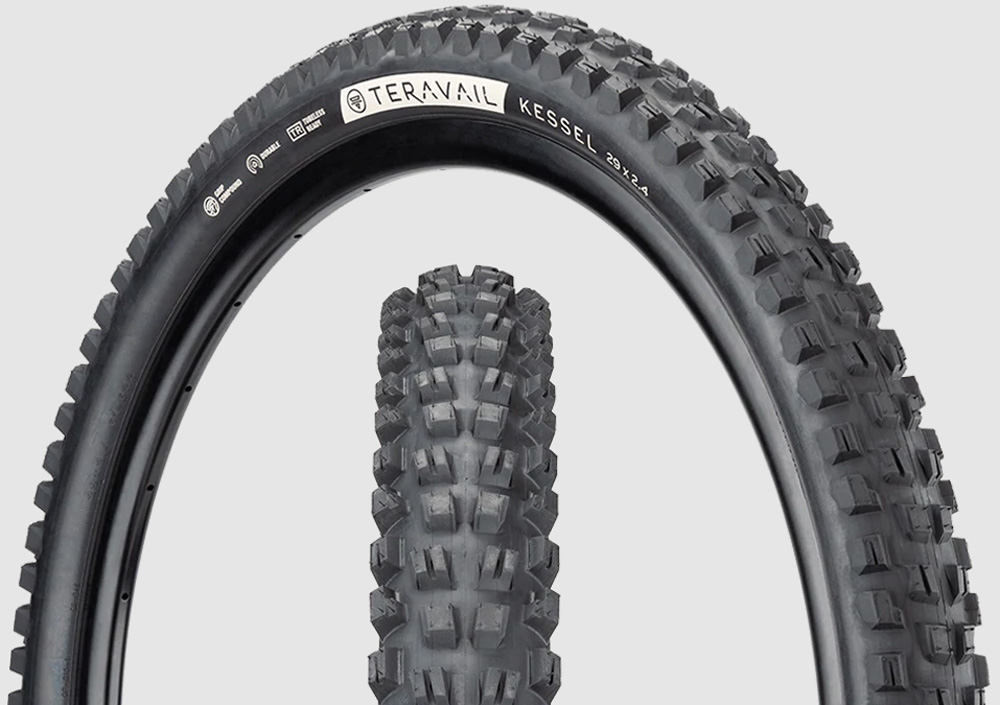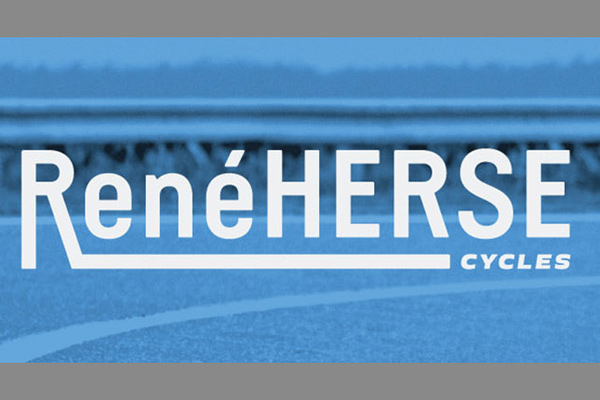“Bikepacking is really about adapting to ever-changing conditions, and yet there hasn’t been a tire that is designed specifically for bikepacking”
Lael Wilcox, 2015 Tour Divide World Record Holder.

In this guide, we walk you through the basics of bikepacking tires to help you make the best choice for your bikepacking adventures ahead. The best bikepacking tire for you will depend on a variety of factors including the type of bicycle you ride, the terrain you ride on, and your style of riding. Across the board, there are several essential qualities that you need to look for in any tire intended for bikepacking use:
- Durability: Bikepacking tires need to be tough enough to handle hazards such as pointy rocks and spiny vegetation for miles and days on end. We generally recommend tubeless tire setups for off-road and gravel road conditions. For more road oriented conditions the jury is still out between tubeless and standard, extra-durable, touring-grade tires.
- Comfort: Covering long distances, day after day over uneven roads and rough trails can really wear you down over the long haul. We recommend using larger-volume tires that allow for running lower pressures for a more comfortable ride. Additionally tires with more compliant side walls can offer a more supple ride, though at the cost of being less durable in harsher terrains.
- Rolling Resistance: Finding the tire with the best balance of speed and traction for the wide variety of terrain that one may encounter on a bikepacking trip can be a tricky balancing act. In general, we recommend tires that have a tread pattern with suitable traction and handling on the roughest parts of your journey, but ideally also can still be fast rolling on the smoother sections.
Determining Your Tire Size and Width Constraints

Before you begin shopping for the perfect bikepacking tires, you’ll need to determine the wheel size of your bicycle and the range of tire widths that will fit your bicycle frame. You’ll also need to determine whether your wheels are tubeless tire compatible or not.
The upper constraint of tire width that you can use on your bicycle is defined by the widest tire that will have sufficient clearance within your bicycle frame and fork.
The lower constraint on width is not as clearly defined. Going with a tire that is too narrow for your frame and fork results in a smaller tire diameter which can alter the geometry of the bicycle and with that your bicycle’s handling characteristics. Additionally, the smaller tire diameter lowers the bottom bracket which can cause clearance issues for your cranks and bottom bracket. This will typically not be an issue on gravel and road bike setups where the maximum tire size might be 45cm and you are considering going down to 32cm. Opting for a smaller tire width will have a significant impact on the bicycles’ geometry and bottom bracket clearance when putting a 2″ tire on a bicycle frame designed around 3″ tires.
Mountain Bike Tire Sizes

Mountain bike tires are available in three diameter options – 26”, 27.5”(also referred to as “650b” typically in the road and gravel bike context), and 29”. The 26” size used to be the industry standard, over the last two decades, 27.5” and 29” tires have largely replaced the 26” option. Apart from tire diameter, mountain bike tires come in various tire widths ranging from 2.2 to all the way to 2.5 inches. Mountain bike tires from 2.8 to 3.2 inches wide are typically referred to as plus-size tires whereas tires above 3.2 inches are considered fat tires.
Gravel Bike Tire Sizes

Gravel Tires usually come in either 650b or 700c diameter sizes with widths typically ranging from 30mm to 50mm. 40mm wide tires are the most popular as they offer the best balance between comfort, traction, and weight. A narrower 30-40mm tire will have your bike feeling lighter and faster compared to the larger 40-50mm wide tire but will offer less comfort when rolling over obstacles.
Road Bike Tire Sizes

Standard road bikes typically have 700c (622mm diameter) wheels, but some smaller framed road bikes may have 650c (571mm diameter) wheels. Standard road tires range between 20 and 30mm in width though more recently have begun coming with as large as 40mm wide tires. Road touring tires on the other hand are very comparable to gravel touring tires, with the main differentiator being that they are designed for smoother road surfaces. Road touring specific tires, like gravel touring tires are typically 30 to 50mm wide.
To Go Tubeless or Not to Go Tubeless
Bicycles have been using inner tubes for a very long time with very good results until the introduction of tubeless technology which first gained popularity among mountain bikers and then expanded into wider use.
Advantages of Tubeless Tires

For a tire to work without an inner tube, the tire bead has to lock directly onto the rim ensuring that the tire, rim, and seated valve stem create a sealed, airtight chamber. Sealant is then poured into the tire and the tire is inflated.
Tubeless tires can run at lower pressures than tubed/clincher tires. This is a massive advantage on rough and rocky terrain as it allows your tires to have better traction and control on the trail making for comfortable off-road riding.
Going tubeless also reduces your chances of getting the most common types of tire punctures, specifically pinch flats and impact strikes. Apart from the lower tire pressure that makes the tire conform to the ground better, puncture protection in a tubeless setup is enhanced by the sealant which seals off small puncture holes and self-repairs before too much air is lost.
Drawbacks of Tubeless Tires
These days, most mid to high-end mountain and gravel bikes come standard with tubeless compatible rims and tires. Usually, these new bikes still come set up with tubes, however, they can easily be set up as tubeless by taping the rim, installing the tubeless valve, filling up the tire with fluid, and then air.
If your bicycle does not have tubeless-ready rims, it will need to be converted to tubeless at a much higher cost. This can get pricey starting at around $100 per wheel and typically involves rebuilding your wheels with a new rim or switching to a new wheelset all together. With the new tubeless rims paid for, you’ll also still need the rim tape, tubeless valve, sealant as well as tubeless tires.
Maintaining Tubeless Tires
Unlike tubed tires, tubeless tires require regular maintenance. Depending on factors like the size of the tire and the environment it is stored in, tubeless sealant will typically need to be refilled every 3 to 4 months. We always recommend a refill before embarking on a big trip.
Repairing Tubeless Tires

While tubeless tires have a massive advantage in flat prevention, when issues come up with them, especially while out bikepacking, they can be difficult to get going again. It is strongly recommended to carry both a tubeless repair kit and a spare tube while bikepacking. The spare tube will be the fail-safe for when the tubeless tire stops holding a seal. A tubeless repair kit can be used to hopefully get the tubeless setup working again without resorting to using the tube.
A typical tubeless tire repair kit includes the following:
- Tire plug: Bacon strips are a good example of a plug that can be used for filling large holes that the tire sealant can’t plug up on their own.
- Extra sealant: A 2 oz bottle of extra sealant to match the sealant type in the tire is wise to carry.
- Tire boot: A tire boot can sometimes be used to repair a large tear in a tire. This can be helpful even if you have to resort to using the tube.
- Thread and needle: Stitching up a tear in a tire is another potential way to get your tire functional for the trip home.
Advantages of Tubed Tires
The main advantages of using tubed tires over tubeless tires are that they are easier to install and they are easier to repair in the event of a puncture as it won’t take much effort and equipment to set them up or fix.
Drawbacks of Tubed Tires

Tubed tires are much more susceptible to punctures, specifically pinch flats and impact strikes. Unlike a tubeless tire that has sealant which seals off small puncture holes and self-repairs, when tubed tires are punctured, they deflate fast and need immediate attention.
Another downside to using tubed tires is that they are unable to run at lower tire pressures making them inferior to tubeless tire setups for off-road riding where low pressure allows for great traction and shock absorption.
Optimize Your Tire’s Riding Characteristics

Once you’ve determined your wheel size and the width options that work with your bicycle frame and fork, as well as if you have the tubeless option, your range of tires to consider will be significantly slimmed down. Now comes the fun part: selecting a tire with the width, tread pattern, profile, and level of durability vs. suppleness that is best suited for the types of surfaces and terrain your upcoming bikepacking route passes over.
One of the great things about tires is that they can be used to dramatically change the riding characteristics of a bicycle. With the wide variety of surfaces that can be encountered while bikepacking, tires can be a great way to balance out the riding characteristics of your bicycle to best handle the variety of terrain that you will encounter.
Choosing an Optimal Tire Width
The width of your tire is measured from edge to edge at the start of your tire tread and contributes to the amount of contact surface between the tire and the road. Generally, tire width is a tradeoff between grip and efficiency. Tires with higher width specifications are more stable and offer better tread/grip compared to those that have a smaller width. In contrast, narrower tires create less rolling resistance and are therefore more efficient.
Typically, bikepackers are leaning towards the widest tires that their frame will allow. This is especially true when attempting to set up road and gravel bikes for bikepacking trips. Wider tires will be suitable for a wider variety of terrain. They also help to stabilize a heavier loaded bicycle. That said, with mountain bikes and gravel bikes that allow for plus-sized tires, orienting towards narrower tires can be more suitable for many bikepacking routes.
Which Level of Durability vs Suppleness?
Choosing the ideal bikepacking tires will have you looking for ones that possess a balance of flat resistance and suppleness. The issue is that designing for one of these traits generally diminishes the other. A durable tire typically comes with designs such as plastic belts, woven flat breakers, or thick rubber 3D flat guards all meant to improve on flat protection. Some tires also possess sidewall protection, anti-chafing strips near the beads, and even anti-pinch flat technology.
You have probably heard of supple tires, they are all the rage within the bikepacking scene for good reason: Supple casings make tires better able to flex under load for a more compliant and comfortable ride. Before supple tires were popularized, it was thought that only small-width tires inflated to high pressures could ride fast. However, research and rethinking within the cycling community led to an understanding that larger tires with supple casings inflated to lower pressures can roll just as fast as skinny road tires with high pressures all while providing a more comfortable and safer ride.
Supple tires function by having lighter-weight more compliant casings. So, while supple tires are ideal in environments that do not pierce, shred and otherwise destroy tires, in harsh riding surface environments such as the desert riding here in Tucson, they do not fare so well. For mountain biking in the desert, look for durable tires that emphasize cut and shred protection over compliance. For tubed road bike tires used for long-distance road tours, belted tires are the norm for their long-distance durability. Supple tires on the other hand work best when set up tubeless and used in road, gravel, and non-harsh mountain biking environments.
A Balanced Tread Pattern

The most visually apparent difference between tires is their tread pattern. Tire treads come in a vast array of shapes, sizes, and patterns, from massive tread blocks to completely slick to everything in between. Knobby treads offer more bite on loose surfaces while grooved treads assist in pushing water on the road to the side, reducing the amount of water sprayed backward by the wheel as it rolls.
Tread patterns are designed to perform best on particular surfaces, so the starting point when choosing your ideal tread pattern is to look at the type of terrain you’ll be riding on most during your bikepacking trip and the likely weather conditions. You may also want to choose tires around the roughest terrain you’ll be encountering so you’ll be more comfortable through the roughest spots. Is it hard-packed gravel? Smooth pavement? Winding singletracks? Will you be slogging through wet mud or rolling through dry paths?
It probably will be a little bit of everything therefore your best bet is to find a wider tire with a moderate amount of tread grooving that’s optimal for the majority of trail conditions. Generally speaking, for dry weather road riding, the tread pattern should not be much of an issue since most touring tires have smooth treads that roll fast on dry roads. For wet weather riding, we recommend a slightly wider tire with some grooving in the tread.
Understanding Profile

Looking at a tire head-on, you will notice that some tire profile are rounder than others while others may look a bit flatter or square. This is your tire’s profile and it is determined by several factors such as the size of the tire, the width of the rim, and perhaps most importantly, the design of the tire.
Tires with a rounded profile tend to roll faster but have less surface area in contact with the ground thus they offer less grip. When cornering with round profile tires, leaning the bike will help to engage the grip with the surface.
Tires with flatter profiles will roll slower but since they have a larger surface area in contact with the ground, their treads grip better. Something to note is that as the rim gets wider, the tire profile will also get a bit flatter.
Make a Choice and Go Bikepacking!

The range of available tires that fall within the constraints of your wheel size, frame width, and tubeless option can range anywhere from just a few to a vast array. If you just have a few tires to choose between, as is often the case with odd tire sizes, you may be largely guided by what’s available within your budget.
If you have a more common tire size, you may have a much larger range of options and be able to really optimize your selection by comparing multiple factors that contribute to the tire’s riding characteristics. Testing different tires will allow you to really fine-tune your selection. And with tires needing to be somewhat regularly replaced, you will soon enough have another opportunity to try out a different set.
Bikepacking Tires Resources
References & Guides
Here are other great sources for learning about bikepacking tires:
- CyclingAbout.Com’s Bikepacking Tires: Which Brands And Models Are TheMost Durable? – This is a great guide on choosing bikepacking tires and the writer goes as far as listing and recommending specific tire models and brands.
- Bikepacking.com’s Neil Beltchenko Video on The Best Tires For The Great Divide – If a tire is good enough to be used in the Great Divide Mountain Bike Route, the Tour Divide race, and other long, mixed-terrain bikepacking routes, it probably can hold its own when the rest of us regular folks set out on our modest bikepacking trips. This video is a quick education on all you need to know concerning bikepacking tires.
- Bikepacking.com’s 29+ List, Options and Guide – The 29+ has been one of the most important bikepacking tires since it was introduced in 2013. This guide discusses the history of this, its current status in the cycling industry, what terrain it is best used on and lists out the current and retired versions of it.
Bikepacking Tires at Campfire
Finding the right bike tire for bikepacking can be simultaneously complicated and simple. Whichever bike you own, here at Campfire Cycling, we hoard all sorts of bikepacking tires whether it’s for all-weather riding or off-road exploring. If you are looking for a specific tire or need help figuring out what tires to get, feel free to reach out and we will certainly help you find one that is most suitable for your bicycle, best for your purpose and style of riding.
Below are some of our featured brands:

Teravail is a Minnesota-based company founded in 2015 offering a diverse assortment of all-terrain bicycle tires. Despite it being an in-house brand affiliated with Quality Bicycle Products -one of the largest and most trusted parts distributors in the cycling industry- the Teravail line of products stand on their own merits and have consistently earned our top marks on all that we look for in bikepacking tires. At Campfire Cycling, we stock Teravail’s complete line of gravel and all-road tires that are perfect for bikepacking and commuting.

René Herse Cycles, formerly Compass Cycles, has been manufacturing high-quality and lightweight bike components since 1938. Their foray into bike tires has been very well received by the cycling community as they make some of the most visually stunning tires in the market. Manufactured in the same Japanese factory as Panaracer tires, their tires come in either knobby or slick treads and each tire size is named after a famous ridgeline and mountain pass in the United States. Rene Herse tires are ridden by the likes of ultra-endurance athlete Lael Wilcox and two-time Dirty Kanza winner Ted King. At Campfire Cycling we stock a wide selection of Rene Herse gravel and all-road bike tires.

Based in Germany, Schwalbe is a respected bicycle tire brand within the global cycling community and is most popular amongst touring cyclists, mountain bikers, and commuters. Their solid reputation has been built off of making incredibly durable tires with extremely good puncture protection that last for thousands of miles. Most long-distance cycle tourists swear by Schwalbe’s tire offerings, particularly the Schwalbe Marathon. At Campfire Cycling, we stock Schwalbe’s complete Marathon line of tires that have been designed for and are champions of long-distance touring.

Panaracer is a Japanese tire manufacturer that was established in 1952 and was one of the first companies to get into the gravel bike scene, offering a range of specialty gravel tires with diverse sizing and tread options. Panaracer has since become a known quantity through their highly popular GravelKing series of tires that have proven to be reliable, versatile, and fast-rolling. At Campfire Cycling we have the GravelKing SK and GravelKing SK Plus in stock and continue to expand our offerings from Panaracer.